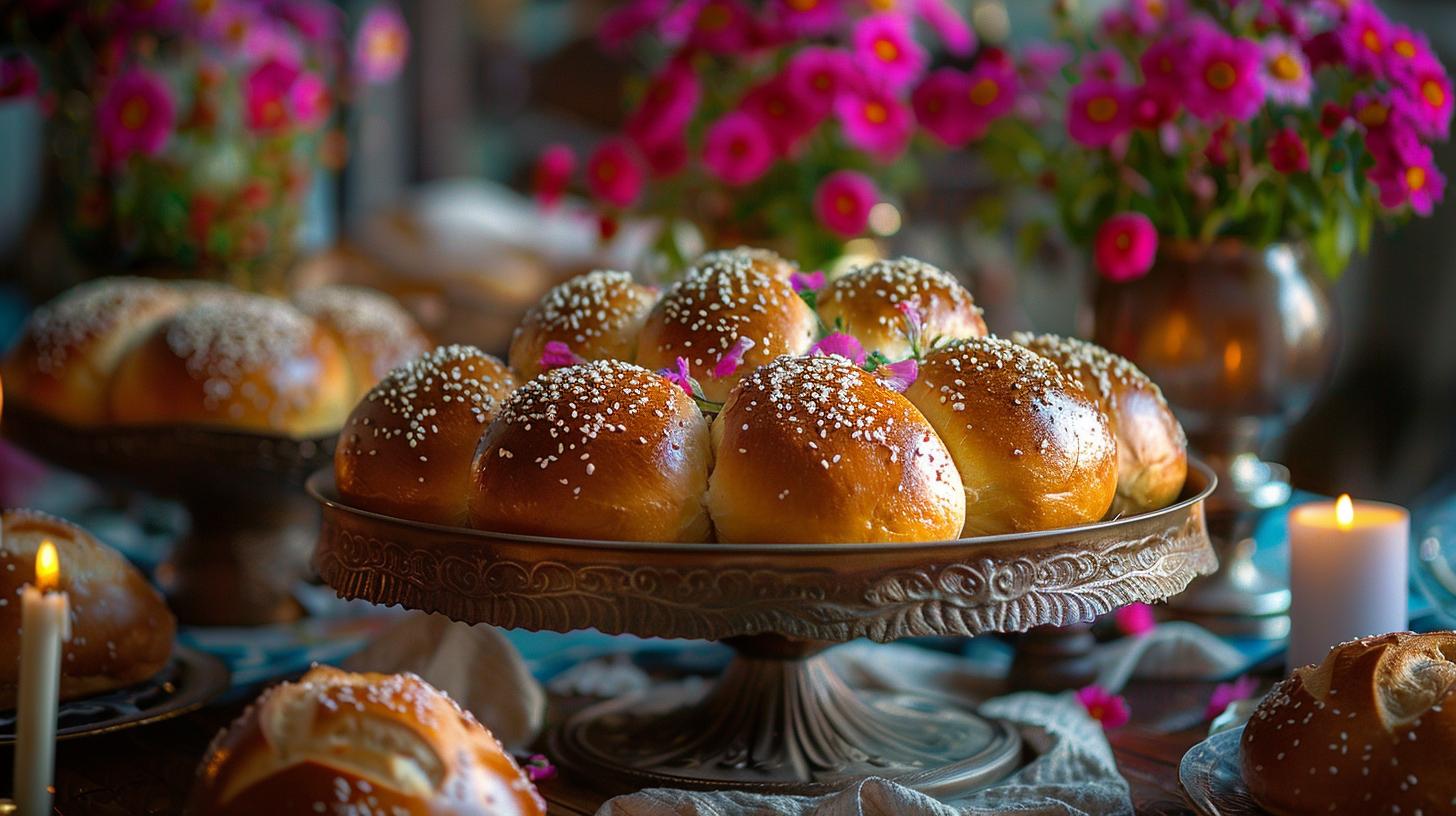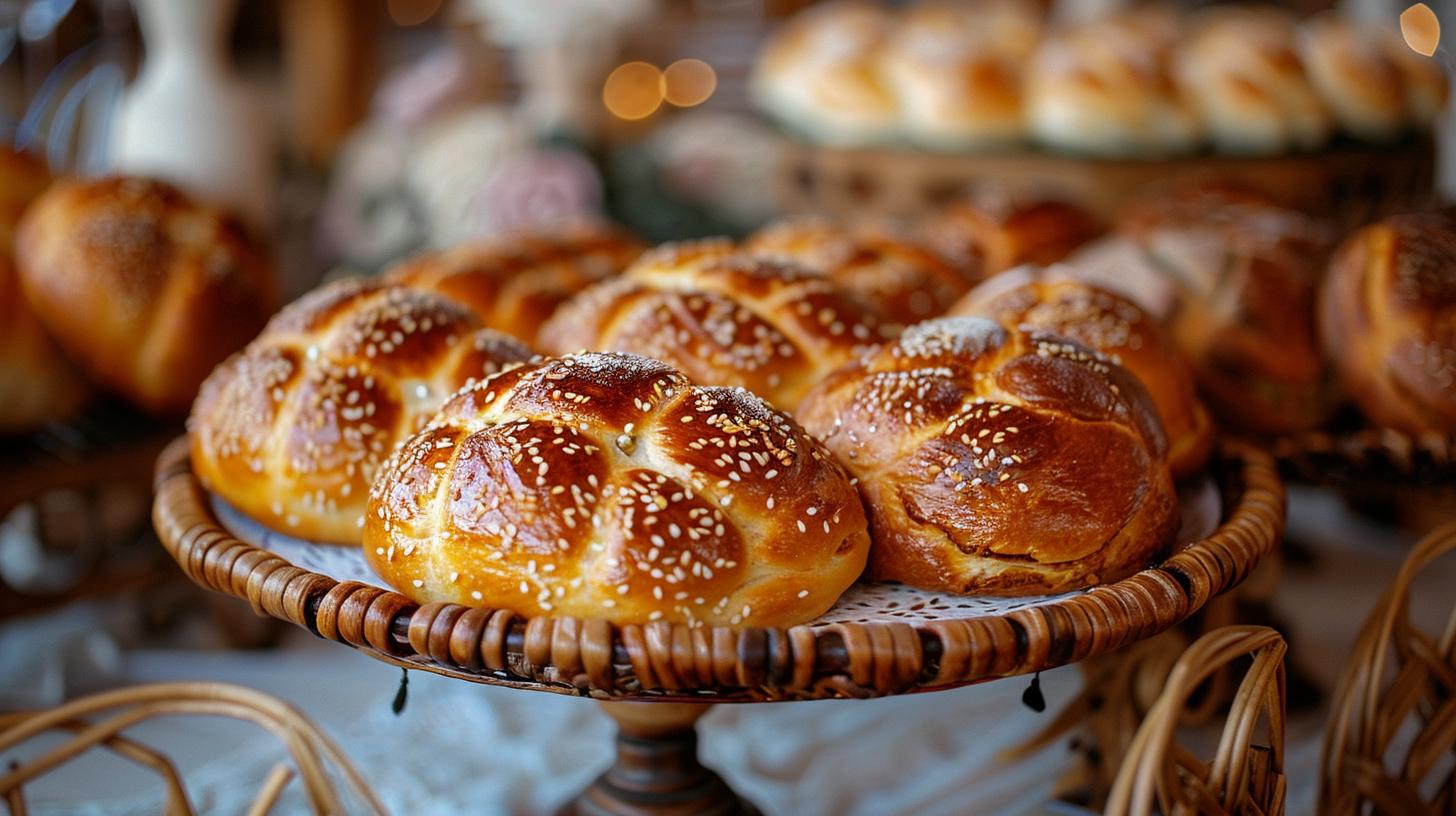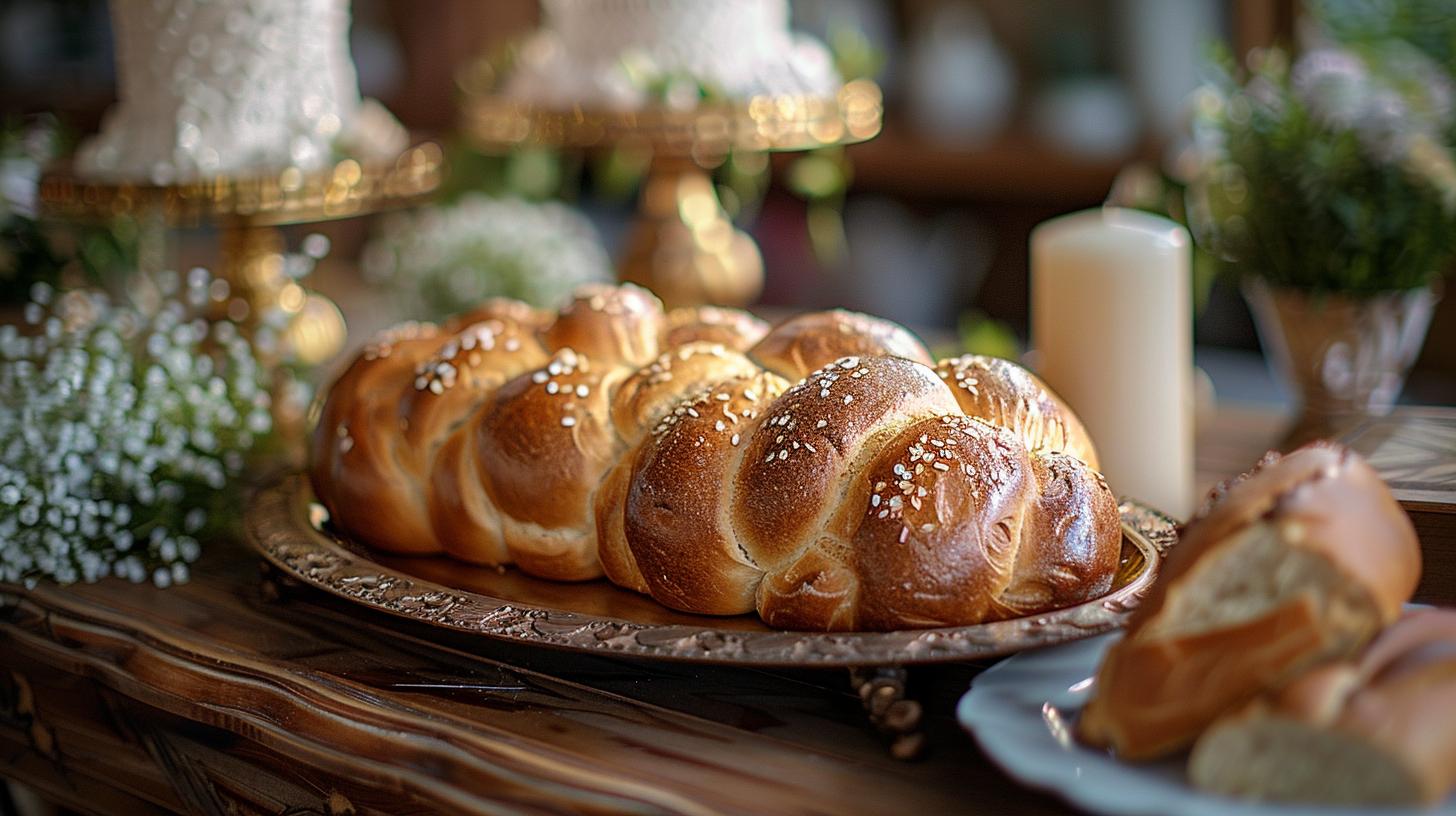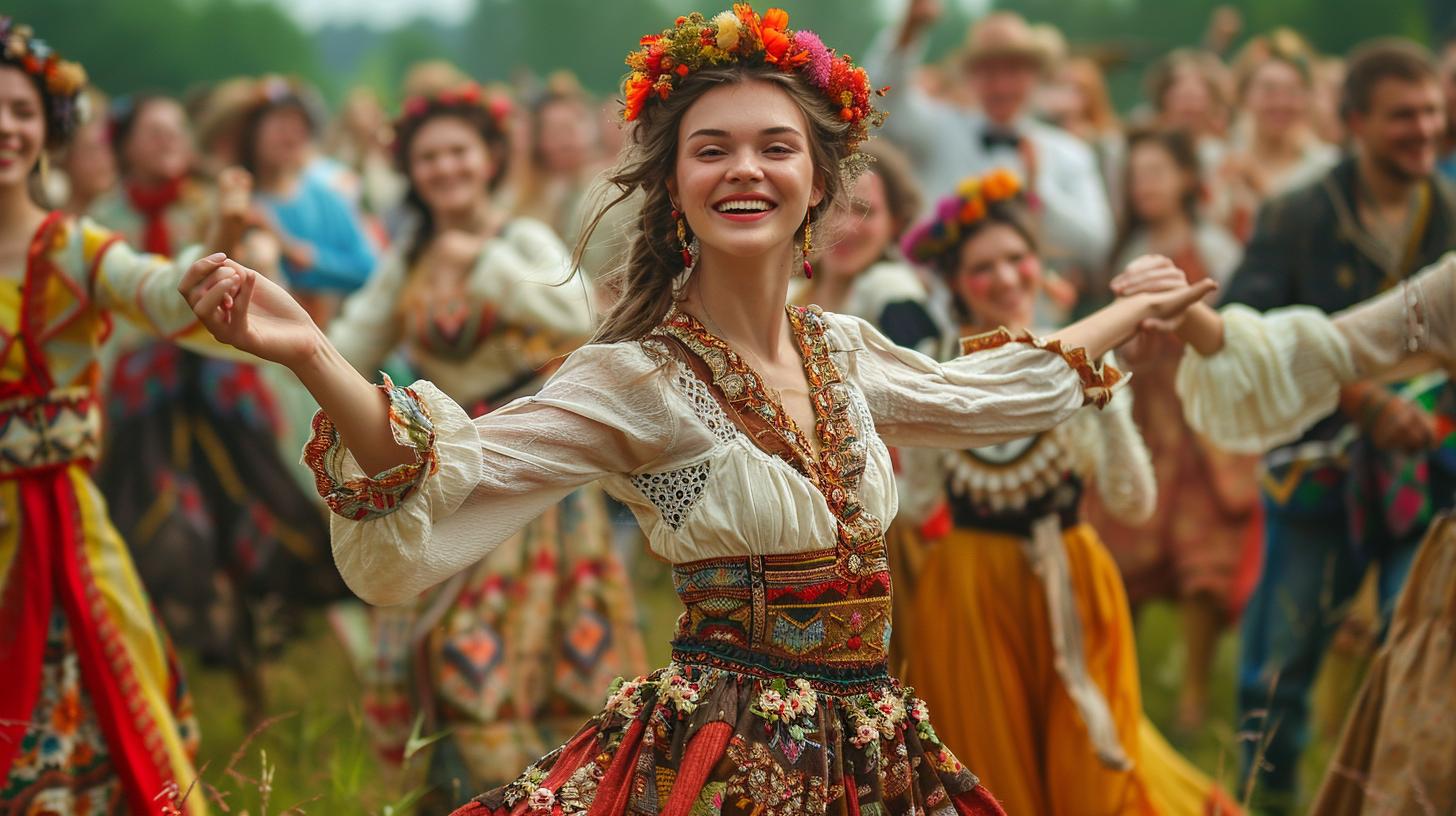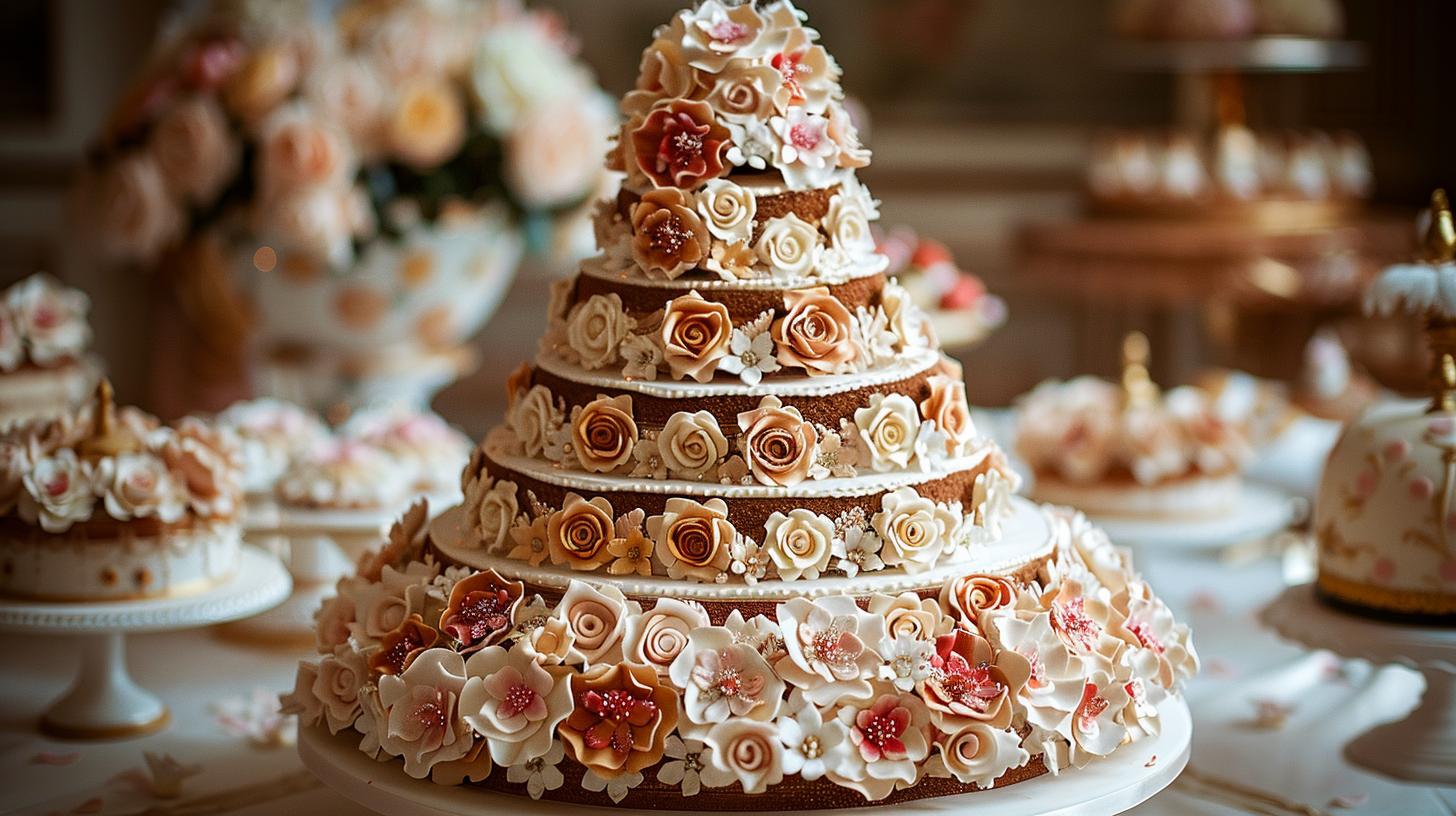Russian Wedding Bread Tradition: A Celebration of Love and Culture
Russian wedding bread, or *karavay*, is a significant part of Russian wedding traditions. This bread symbolizes love, unity, and prosperity, reflecting the deep cultural values of the Russian people.
The preparation of *karavay* involves various rituals, making it a communal activity that brings families together. Its rich history and symbolic meaning enhance its role in celebrating the couple’s new life together.
Origins of Russian Wedding Bread
The *karavay* has deep roots in Russian history, reflecting a blend of ancient traditions and evolving cultural practices. Understanding its origin sheds light on its significance in contemporary wedding ceremonies.
Ancient Slavic Traditions
The practice of baking bread for significant events can be traced back to ancient Slavic communities.
In these societies, bread was not only a dietary staple but also a vital element in rituals and celebrations. Early Slavs viewed bread as a gift from the gods, representing fertility and prosperity.
Rituals involving bread often coincided with agricultural cycles, reinforcing the connection between food production and community well-being. In these traditions, the act of baking was surrounded by fervent ceremonies designed to invoke blessings for the upcoming harvest and, by extension, the marrying couple.
- Common practices included:
- Offering bread to deities, seeking their favor for successful crops.
- Casting bread remnants into fields to promote fertility in the soil.
- Creating decorative bread for special occasions, such as weddings.
Evolution Over Time
As time progressed, the *karavay* evolved into a symbol specifically tied to marriage ceremonies.
Its transformation reflects the interplay between ancient beliefs and the developing social structure of Russian society. By the time of the Kievan Rus, the *karavay* began to represent not just sustenance, but also the unity and prosperity wished upon newlyweds.
The shift in the bread’s meaning can be linked to several historical factors:
- Influence of Christianity, which introduced spiritual dimensions to the custom.
- Integration of new baking techniques and ingredients, enhancing both symbolism and flavor.
- Regional variations that introduced distinct styles and decorations, making the *karavay* a cherished local tradition.
By the late medieval period, the *karavay* became intricately woven into wedding ceremonies, marking the moment when couples officially shared their lives together.
This ceremonial bread not only encapsulated the couple’s hopes and dreams but also served as a bridge connecting generations.
With each passing era, the preparation and presentation of *karavay* during weddings adapted to reflect cultural changes, yet its core symbolism of love, community, and prosperity has remained steadfast.
Cultural Significance of Karavay
The cultural significance of *karavay* in Russian weddings goes beyond mere sustenance. This traditional bread encapsulates deep-rooted values, symbolizing the foundation of marriage and community.
Symbolism in Marriage
Central to this symbolism is the notion of sharing, which echoes the essential elements of love, commitment, and partnership. The act of sharing bread is a traditional gesture signifying trust and mutual support, essential pillars for a successful marriage.
Moreover, the bread becomes a metaphor for the nourishment that the couple promises to provide each other throughout their lives together. It encapsulates the hopes and expectations that families place on newlyweds, highlighting the desire for a fruitful and joyful union.
Proverbial Importance of Bread
In Russian culture, bread holds a revered position, often being referred to as the cornerstone of sustenance. The saying, “Bread is the head of everything,” emphasizes its essential role not only in daily life but also during significant occasions like weddings.
This metaphor extends to how the *karavay* is integrated into marriage ceremonies, reinforcing its importance in symbolizing abundance and care for one another.
The respect for bread in Russian traditions can be traced back to its historical role as a vital food source.
This longstanding appreciation conveys a sense of gratitude and recognition of the efforts involved in producing food, particularly during festivities. In essence, the *karavay* embodies both cultural heritage and practical significance, showcasing how food can serve as a bridge between generations and communities.
Representation of Happiness and Prosperity
The *karavay* is not just sustenance; it embodies the collective wishes for happiness and prosperity in a couple’s new life. Traditionally, the bread is adorned with decorative motifs that symbolize various aspirations.
For instance, the inclusion of wheat spikes represents fertility and growth, while swans often symbolize loyalty and fidelity.
At weddings, the sharing of this bread signifies the couple’s commitment to fostering an environment of joy and abundance.
The act of eating the *karavay* together during the ceremony illustrates their joint promise to nurture each other and their future family. This ritual serves as a reminder that the couple’s journey is enriched by the support of their community and the blessings that surround them.
- Fertility: Represented by wheat spikes, embodies the growth of the family.
- Loyalty: Swans symbolize fidelity and devotion to one another.
- Abundance: The size and decoration of the bread reflect hopes for wealth and fulfillment in their marriage.
As couples embrace this custom, the *karavay* continues to inspire a sense of belonging and nostalgia, connecting modern celebrations with ancient traditions.
Rituals and customs associated with the preparation and presentation of *karavay* play a vital role in highlighting family bonds and community connections.
These practices are steeped in tradition and significance, celebrating the essence of togetherness and shared joy.
Rituals and Customs
Ceremonial Grinding of Flour
The process of making *karavay* begins with the ceremonial grinding of flour, a practice that embodies both physical labor and spiritual intention. This ritual serves as a foundational step, invoking blessings for the new couple.
Historical Tools and Techniques
Historically, specific tools were used for grinding flour, such as millstones and hand-operated grinders. These tools, often passed down through generations, reflect the artisanal nature of bread-making. The use of such traditional equipment emphasizes the connection between past and present, showing respect for ancient methods.
Spiritual Significance
The act of grinding flour carries deep spiritual meanings. It is believed that the toil involved not only nourishes but also creates energy and positive intentions for the couple. As the flour is ground, it symbolizes the transition from individual lives to a shared journey, invoking prosperity and happiness in marriage.
Community Involvement
Community participation in the baking of *karavay* creates a vibrant atmosphere filled with joy and celebration. This involvement reinforces family ties and reflects the communal aspect of Russian culture.
Role of Family and Friends
Traditionally, the preparation of the *karavay* involves close family members and friends, particularly those who are married and have children.
Their participation is seen as a way of sharing familial happiness and blessings with the newlyweds. This gathering fosters a sense of unity and love, as each person contributes not just ingredients but also support and well-wishes.
Songs and Prayers
These traditional songs often express hopes and blessings for the couple’s future, creating an interactive experience that resonates emotionally.
The collective act of singing strengthens bonds among participants, intertwining their destinies with those of the marrying couple.
Ritualistic Ingredients
The ingredients chosen for the *karavay* are not merely functional; they carry symbolic meanings that enhance the ritual’s depth. Understanding the significance of each ingredient offers insight into the values embedded in this tradition.
Meaning of Each Ingredient
- Wheat: Represents abundance and fertility, embodying the hopes for a prosperous life together.
- Salt: Symbolizes endurance and the essential nature of life, reminding everyone of the importance of sharing both the sweet and the salty moments in life.
- Yeast: Acts as a catalyst for growth, reflecting the development of the couple’s relationship and the blossoming of their future together.
Wheat, Salt, and Yeast
The careful selection of wheat flour, salt, and yeast during the preparation signifies both practicality and deep-rooted traditions.
Wheat flour is often sourced locally, reinforcing the community’s agricultural heritage. Salt, in its essential role, reflects the idea that life’s experiences will encompass both joy and challenges. Yeast serves as an important reminder that, much like marriage, growth requires time, patience, and nurturing.
Preparation Process
The preparation of karavay is a vital aspect of the Russian wedding bread tradition, characterized by its intricate process that involves several stages. Each step is steeped in cultural significance, reflecting the values of unity, community, and love inherent in this age-old custom.
Making the Mother Dough
Creating the mother dough, or starter, is the first step in the karavay preparation. This mixture serves as the foundation for the final bread, contributing to its flavor and texture. The ingredients typically include wheat flour, water, salt, and a small amount of yeast.
The process begins by combining 200 grams of wheat flour with 155 grams of water, adding 2 grams of salt and 1 gram of dry yeast. This mixture is stirred until well combined and then covered with cling wrap.
It is left to rise at room temperature for a few hours before being refrigerated for 12 to 16 hours, allowing the flavors to develop fully.
Mixing the Main Dough
Once the mother dough has been prepared, attention turns to mixing the main dough. This step incorporates additional ingredients that enhance the karavay’s volume and richness.
To make the main dough, warm 550 grams of water to a temperature between 28-30°C.
In a large bowl, combine 100 grams of rye flour and 700 grams of wheat flour before sprinkling dry yeast on top. After a brief moment for the yeast to dissolve, the mother dough is added, creating a base that binds the ingredients together.
The mixture is kneaded with a dough hook for five minutes. Salt, about 15 grams, is then added, followed by an additional eight minutes of kneading until the dough achieves an elastic consistency.
Shaping and Decorating
With the dough kneaded to perfection, the next step is shaping and decorating the karavay. This is where the bread takes on its traditional form, often embellished with various motifs that hold cultural significance.
Traditional Motifs and Symbols
The shaping of the karavay goes beyond mere aesthetics. The dough is typically formed into a round shape, symbolizing unity and continuity in life. Bakers often create decorative elements using excess dough for braids, spirals, or motifs such as swans and wheat spikes.
Swans represent loyalty, while wheat spikes signify fertility and abundance.
Modern Interpretation
Though traditional designs hold strong cultural resonance, many contemporary bakers choose to personalize their karavay. Modern interpretations can include unique symbols or colors that represent the couple’s identity or interests, thereby making the bread a personal statement as well as a celebration of tradition.
Baking the Karavay
The final stage of the karavay preparation is the baking process, where the magic transforms the raw dough into the celebratory bread. Proper baking is crucial to achieving the right texture and flavor.
The oven is preheated to 230°C. It is essential to place an empty tray at the bottom of the oven; this will be used later to create steam, which helps achieve a crusty exterior.
Once the oven reaches the desired temperature, the karavay is placed inside and baked for about 10 minutes. Subsequently, the temperature is reduced to 200°C, allowing the bread to bake for an additional 45 minutes.
It is monitored closely to ensure even baking without burning.
After baking, the karavay is removed from the oven and left to cool on a wire rack. Cooling allows the flavors to settle and enhances the bread’s texture.
Wedding Day Traditions
On the day of the wedding, the rituals surrounding the *karavay* play a pivotal role in celebrating the couple’s love and the support of their families. These traditions highlight the communal nature of the event and the deep-seated beliefs associated with bread in Russian culture.
The Bride and Groom’s First Bite
One of the most anticipated moments during the wedding ceremony is when the bride and groom take their first bite of the *karavay*. This act is a beautiful ritual symbolizing their commitment to each other and their intention to share all aspects of their life together, including joys and challenges.
As they bite into the bread, it signifies the beginning of their journey as a married couple. Traditionally, the couple would each take a piece from the bread, showcasing their unity and readiness to nurture their relationship.
Sharing with Guests
The act of sharing the *karavay* with guests extends the moment of intimacy experienced by the couple. It transforms a personal experience into a shared celebration, inviting family and friends to partake in the happiness of the newlyweds.
Symbolic Meaning
Sharing the *karavay* is highly symbolic in Russian weddings. The bread represents love, prosperity, and abundance, and by sharing it with guests, the couple is imparting their good fortune and blessings.
It fosters a sense of community, where everyone present receives a slice of the couple’s happiness.
Distribution to Unmarried Women
Often, the remaining pieces of the *karavay* are distributed to unmarried women at the wedding. This custom carries hope and blessings for their future prospects in marriage. The belief is that whoever receives a piece of the bread might soon find their own happiness and love, mirroring the couple’s joyous occasion.
This ritual reinforces the sense of continuity and community within the culture, while also embodying the aspirational qualities of marriage, love, and family ties that transcend generations.
Personal Stories and Modern Revival
The revival of the *karavay* tradition reflects a deep-seated connection to heritage among modern couples.
Personal stories reveal how these rituals are infused with contemporary significance, often resulting in creative interpretations that celebrate love and familial bonds.
Contemporary Couples Embracing the Tradition
In recent years, many couples have chosen to incorporate the *karavay* into their wedding ceremonies as a way to honor their cultural roots. This rekindling of tradition adds a special layer of meaning to their celebrations.
For instance, a couple named Alex and Scott decided to feature the *karavay* at their wedding, with the bread lovingly prepared by Alex’s mother and aunt, who traveled from Germany and Russia.
Such stories illustrate how couples seek to connect with their past while celebrating their futures together.
Family Involvement in Modern Weddings
The role of family in creating the *karavay* has evolved but remains crucial. Many couples actively involve relatives in the preparation process, highlighting the communal aspect of this tradition. Family members not only contribute their skills in baking but also share stories and experiences that enrich the ritual.
This participation strengthens family ties and creates lasting memories for both the couple and their loved ones.
Role of Family and Friends
The act of baking the *karavay* often transforms into a celebratory gathering. Family and friends come together to partake in this meaningful endeavor, filling the kitchen with laughter, song, and shared traditions.
This social aspect emphasizes not just the act of baking, but the connections forged through collaboration and shared hopes for the couple’s future.
Songs and Prayers
While making the *karavay*, it is common for family members to sing traditional songs or recite prayers. These elements add a spiritual dimension to the baking process, transforming it into an event steeped in both history and heartfelt wishes.
The songs often carry messages of love and happiness, thereby enhancing the emotional power of the ritual.
Emotional Resonance and Heritage
The emotional significance of the *karavay* extends beyond its role in the wedding ceremony. For many, the act of baking and sharing this special bread encapsulates memories and stories passed down through generations.
Couples find comfort and meaning in utilizing the *karavay* as a way to honor their ancestors and transmit cultural values to future generations.
Contemporary Couples Embracing the Tradition
Personal stories abound of those who have taken the time to research and adapt the *karavay* to suit their particular celebrations. Some modern couples have chosen to modernize the appearance of the bread while maintaining its traditional symbolism.
These adaptations incorporate unique designs or flavors that reflect their personal tastes while retaining the significance of the ritual, demonstrating how traditions can evolve without losing their essence.
Family Involvement in Modern Weddings
Such intimate connections fostered through the process of baking the *karavay* can lead to a deeper appreciation of cultural heritage.
As couples share the bread with their guests, they are creating a dialogue between past and present. The memories formed during this process resonate deeply, reminding everyone present of the importance of love, family, and unity.
Preparing the traditional Russian wedding bread, known as *karavay*, involves intricate recipes and techniques that honor its cultural heritage. The following sections outline the classic recipe, detailed steps in the preparation process, and helpful tips for achieving the best results.
Recipes and Techniques
Traditional Karavay Recipe
Ingredients and Measurements
The following ingredients are necessary for creating the traditional *karavay*:
- 200g wheat flour
- 155g water
- 2g salt
- 1g dry yeast
- 100g rye flour
- 700g wheat flour
- 550g water
- 15g salt
- 5g dry yeast
Step-by-Step Instructions
The process of baking *karavay* is sacred and requires careful attention to detail.
Follow these steps to prepare the bread:
- Prepare the Mother Dough: Mix the initial set of ingredients in a bowl. Cover it with cling wrap and let it ferment at room temperature for a few hours before refrigerating for 12–16 hours.
This fermentation develops the flavor.
- Make the Main Dough: Warm the additional water to between 28–30°C. Combine this warm water with the larger quantity of flour. Sprinkle the yeast on top of the mixture and allow it to dissolve briefly.
Incorporate the *mother dough* and knead the mixture with a hook attachment for five minutes before adding the salt. Knead for an additional eight minutes until the dough is smooth and elastic.
- Rising: Cover the dough and place it in a warm environment.
Allow it to rise for about 1.5 hours, or until it doubles in size. Gently deflate the dough and separate it into portions for shaping.
- Shaping and Decorating: Use the larger portion to form a round loaf.
Roll out the remaining dough into different shapes for decoration. Traditional symbols such as braids or spirals can be created to enhance the appearance.
- Baking the Karavay: Preheat the oven to 230°C.
Place an empty tray at the bottom of the oven to create steam during the baking process. Bake the *karavay* at this high temperature for approximately 10 minutes, then reduce the heat to 200°C and continue baking for another 45 minutes.
Once baked, allow the bread to cool adequately before touching.
Tips for Baking Success
Common Mistakes to Avoid
When making *karavay*, certain pitfalls can hinder the desired outcome. Awareness of common mistakes can lead to a better result:
- Incorrect Temperature: Ensure that the water used for mixing is at the correct temperature.
Too hot or too cold can kill the yeast or slow down the fermentation process.
- Overworking the Dough: Kneading is important, but overworking can lead to tough bread. Knead just enough to develop gluten and achieve elasticity.
- Inadequate Rising Time: Patience is key when allowing the dough to rise.
Skipping this crucial step can result in dense bread.
Enhancing Flavor and Texture
The flavor and texture of *karavay* can be enriched through specific practices:
- Use Fresh Ingredients: Always utilize fresh flour, yeast, and other ingredients. Quality inputs yield a more flavorful and textured bread.
- Incorporate Traditional Flavors: Adding seeds or herbs to the dough can elevate the flavor profile and enhance the bun’s aromatic qualities.
- Experiment with Decorative Elements: Using decorative motifs not only enhances the appearance but can also add a subtle flavor through the inclusion of various toppings, such as sesame seeds or poppy seeds.
.

